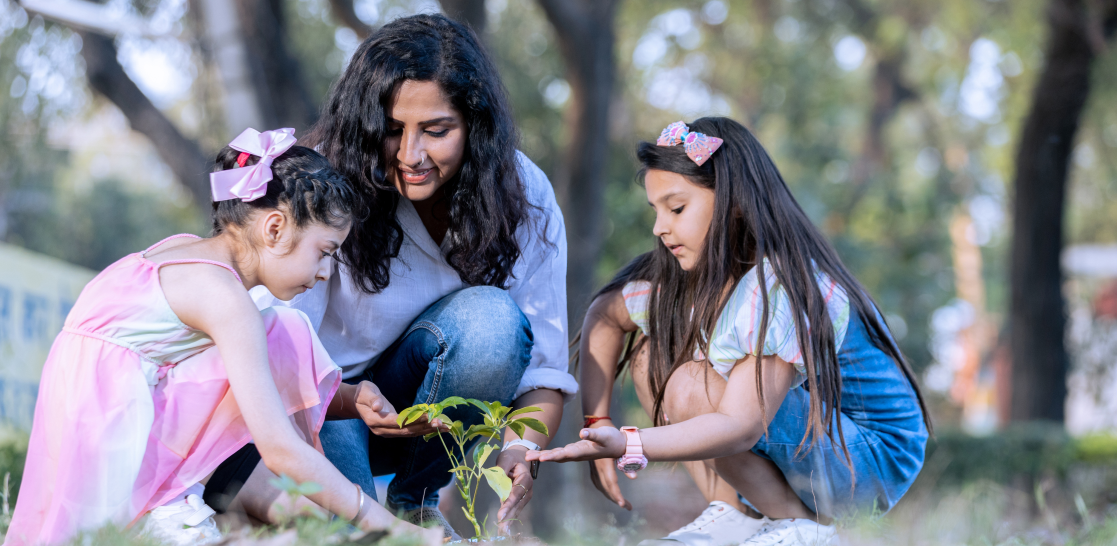![]()
Environmental education is crucial for building a sustainable future, but traditional methods can sometimes feel boring. Here’s where gamification comes in! Gamification, the application of game-design elements in non-game contexts, offers a dynamic and engaging approach to teaching these important concepts. By integrating game elements such as interactive simulations, point systems, and narrative-driven quests, educators can enhance student engagement while deepening students’ understanding of ecological concepts. Moreover, gamification fosters a sense of achievement in students that encourages them to continue learning.
Here are five creative and effective ways to gamify environmental education:
- Eco-Quests and Challenges
Concept: Transforming lessons into adventurous quests can capture students’ imaginations and motivate them to learn more about environmental issues.
Implementation: Creating a series of eco-themed quests where students must solve environmental puzzles or complete tasks. These tasks include identifying local plant species, understanding waste segregation, or finding solutions to reduce carbon footprints in their community. Incorporating technology through mobile apps or QR codes that provide clues and track progress.
Benefits: Eco-quests foster teamwork, critical thinking, and practical application of environmental knowledge. They also encourage students to explore their surroundings and connect with nature.
- Environmental Simulation Games
Concept: Using simulation games to model complex environmental systems and scenarios.
Implementation: Games like SimCity, but with a focus on sustainability, allow students to manage a virtual city where they must balance economic growth with environmental conservation. Alternatively, custom-built games can simulate specific ecosystems where players must make decisions to maintain biodiversity, manage resources, or respond to environmental crises.
Benefits: Simulation games provide a hands-on learning experience about the consequences of environmental decisions. They help students understand the interconnectedness of ecological systems and the impact of human activities on these systems.
- Green Points System
Concept: Introduce a points-based reward system that designates the winner as the Eco-Champion, encouraging environmentally friendly behaviours.
Implementation: Creating a classroom or school-wide system where students earn points for activities like recycling, reducing energy usage, participating in clean-up drives, or completing environmental projects. Points can be tracked on a leaderboard, and rewards can include eco-friendly prizes or privileges.
Benefits: This approach incentivises positive behaviour and instils habits that contribute to environmental sustainability. It also fosters a sense of healthy competition and community involvement.
- Interactive Storytelling and Role-Playing
Concept: Engaging students through interactive storytelling and role-playing games that highlight environmental challenges.
Implementation: Teachers can develop storylines where students take on roles such as environmental scientists, policymakers, or activists. Through role-playing, they can navigate scenarios like negotiating climate agreements, managing a wildlife reserve, or campaigning for green policies. Use multimedia resources to enhance the storytelling experience.
Benefits: Role-playing and storytelling can make abstract or complex environmental issues more relatable and understandable. It also allows students to empathise with different perspectives and understand the real-world impact of environmental decisions.
- Eco-Friendly Competitions and Tournaments
Concept: Utilising VR and AR technologies to create immersive learning experiences about the environment.
Implementation: Using VR headsets to take students on virtual field trips to diverse ecosystems such as rainforests, coral reefs, or arctic landscapes. AR apps can overlay environmental information onto real-world settings, allowing students to see the impact of pollution or deforestation in their own neighbourhoods.
Benefits: VR and AR provide engaging and immersive experiences that can make learning about the environment exciting and memorable. They offer unique opportunities for students to explore places and phenomena that are otherwise inaccessible.
Conclusion
By incorporating these gamified strategies into the environmental education curriculum, educators can create an engaging and dynamic learning experience that motivates students to actively participate in protecting and preserving our planet. These approaches not only make learning fun but also instil a sense of responsibility and empowerment in students as they become more eco-conscious citizens.

